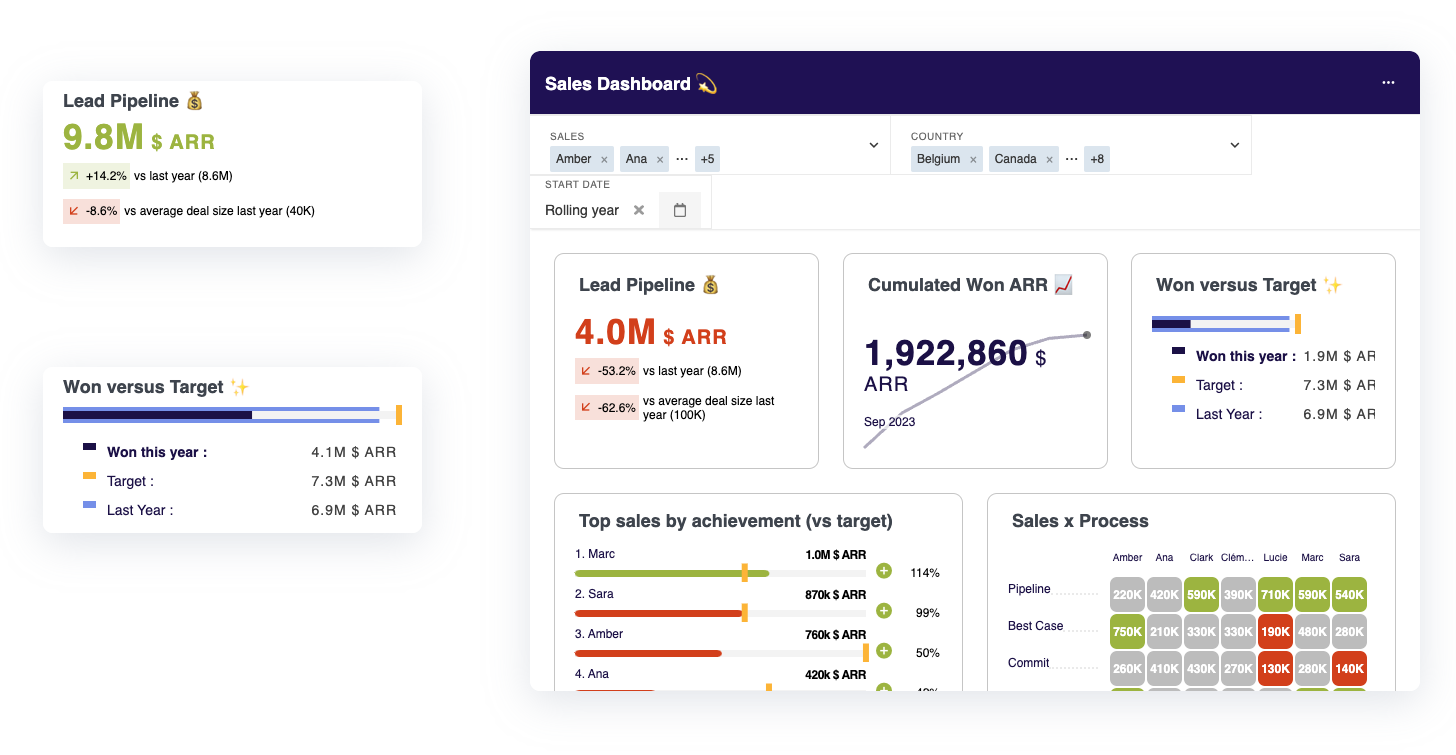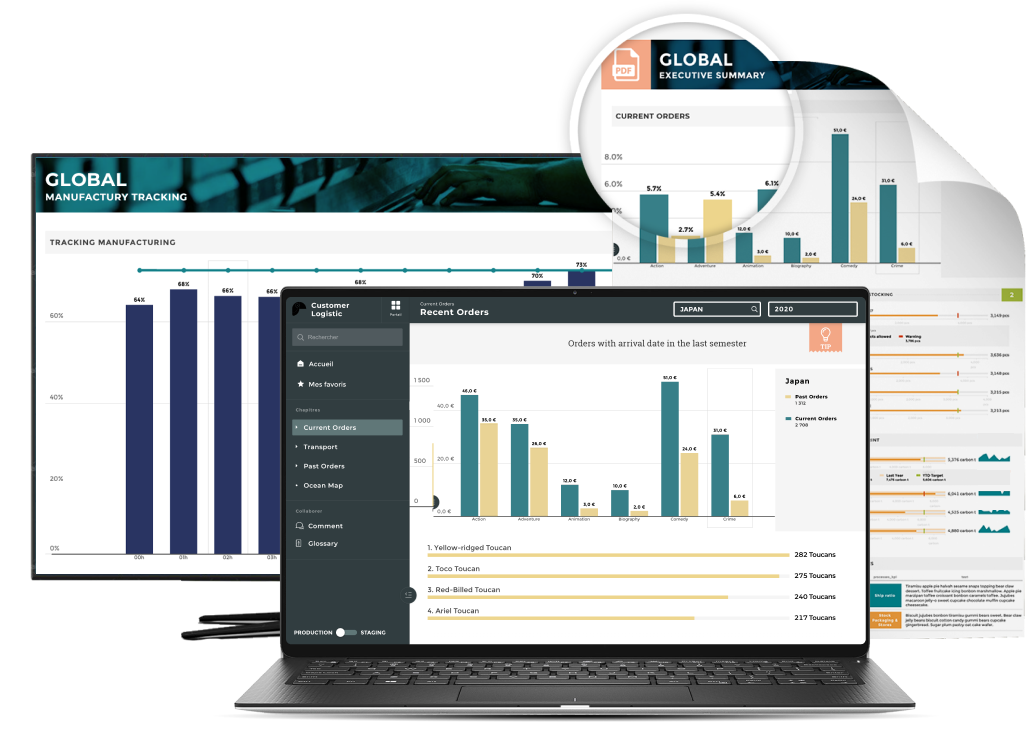In a world where data drives decisions, an effective analytics database is more than just a tool—it's a crucial asset for any business aiming to elevate its decision-making processes to the next level. As data volumes expand, the challenge shifts from mere collection to deriving actionable insights.
The right analytics selection can significantly enhance your organization's ability to make informed decisions quickly. This article offers five essential tips to help you develop and optimize an analytics database that turns data into a strategic asset, propelling your business forward.

1. Choose the right database type
The foundation of an effective analytics solution is choosing the appropriate type of database that aligns with your specific needs. Generally, databases are categorized into two main types: SQL and NoSQL.
- SQL (Structured Query Language) Databases: These databases are structured in nature and are ideal for complex queries and joining large datasets. SQL databases are excellent for scenarios where transactional consistency is critical. Examples include MySQL, PostgreSQL, and Oracle.
- NoSQL Databases: Contrary to SQL databases, NoSQL databases are designed to handle unstructured data with dynamic schemas for more agility and scalability. They are particularly useful when dealing with large volumes of diverse data types that may not fit neatly in a traditional row and column format. NoSQL databases include MongoDB, Cassandra, and Couchbase.
Choosing the right fit: The decision to choose between SQL and NoSQL should be based on your project’s specific requirements. Consider factors such as:
- Data complexity and structure: SQL is preferable for complex queries in structured data, whereas NoSQL offers flexibility for unstructured data.
- Scalability requirements: NoSQL databases generally provide better horizontal scaling compared to SQL databases.
- Consistency needs: If your application requires strong transactional consistency, SQL databases might be more appropriate.
By carefully evaluating your data needs against these characteristics, you can select a database type that not only enhances your analytics capabilities but also optimizes performance and scalability.
2. Optimize data structures for query efficiency
A well-structured database not only speeds up query response times but also reduces the load on your computing resources, making your analytics processes more cost-effective and administrable.
- Data modeling: Design your data schema to reflect how your business queries data. Organize and structure datasets to minimize complexity and maximize accessibility. Use normalization to eliminate redundancy where appropriate, but consider denormalization if it improves read performance for your specific use cases.
- Indexing: Implementing the right indexing strategy is key to speeding up data retrieval. Indexes support the quick location of data without scanning every row in a database, which is crucial for performance in large databases. Prioritize columns that are frequently used in WHERE clauses or as JOIN conditions in queries.
- Partitioning: Data partitioning divides a database into distinct, independent parts to improve manageability, performance, and availability. Partition large tables based on commonly queried columns or historical data usage patterns to enhance query performance and simplify maintenance tasks.
3. Ensure scalability and flexibility
As your organization grows, so do your data needs. Ensuring that your analytics database can scale effectively is essential to accommodate increased loads and evolving data types.
Scalability types:
- Vertical Scaling: This involves adding more resources to your existing machine, such as more CPUs or memory. It’s simpler but often has physical or cost-related limitations.
- Horizontal Scaling: This involves adding more machines to your database infrastructure, allowing it to grow with your data needs. Most modern NoSQL databases are designed to excel in this area, offering flexibility as demands increase.
Cloud solutions: Consider leveraging cloud-based database services that offer built-in scalability and flexibility. Cloud providers like AWS, Google Cloud, and Azure provide services that automatically adjust your database’s storage and performance levels as needed.
Future-proofing: Design your database with future growth in mind. This might include choosing technologies that support easy integration of new data sources and types, or planning for cross-platform compatibility if you anticipate a technology shift.
4. Implement strong data governance
Effective data governance is essential for any analytics database to ensure the integrity, security, and usability of data.
Data quality control: Establish processes to maintain the accuracy, completeness, and consistency of your data across all datasets. Implement data validation rules and routines to clean data automatically, preventing inaccurate data from skewing your analytics results.Access management: Control who has access to what data through robust access controls and authentication mechanisms. Define roles and permissions clearly to limit access to sensitive data and protect against unauthorized data breaches.
Compliance and security: Adhere to relevant data protection regulations such as GDPR, HIPAA, or CCPA. Encrypt sensitive data, both in transit and at rest, and conduct regular security audits to ensure compliance and enhance data protection measures.
5. Leverage database automation and monitoring tools
As mentioned at the outset, collecting and storing data is the initial step; the next crucial phase is leveraging that data effectively. To foster a data-driven culture, it is essential to prioritize automation, monitoring, and reporting tools. These tools will enable efficient data utilization and facilitate informed decision-making across the organization.
Automation: Implement automation tools to handle routine database management tasks such as backups, updates, and scaling operations. This not only saves time but also reduces the likelihood of human errors affecting your data.
Performance monitoring: Use monitoring tools to keep a constant watch on your database’s performance metrics. Tools like Prometheus, Graf one, and SQL Diagnostic Manager can help identify bottlenecks and performance issues before they impact your operations.
Analytical tools integration: Integrate advanced analytical tools and platforms with your database to enhance data processing capabilities. Tools like Apache or Spark can be used for heavy-duty data processing tasks, while tools like Toucan can help visualize and analyze data more effectively. With our embedded analytics tool, turn insights into actions and make data more understandable for your team and your clients.
building an effective analytics database is crucial for deriving actionable insights and driving business growth. By selecting the right database type, optimizing data structures, ensuring scalability, implementing strong data governance, and leveraging automation and monitoring tools, businesses can enhance their analytics capabilities. These strategies help transform raw data into valuable insights, supporting better decision-making.
To explore more detailed tips and tools, visit Toucan Toco and see how to elevate your data analytics strategy.






